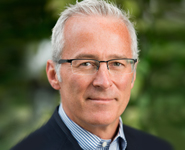
By Terry Edwards, President and CEO, PerfectServe
Twitter: @perfectserveCEO
Twitter: @PerfectServe
According to a recent report, Internet of Things (IoT) deployments in healthcare are predicted to reach $117 billion in the next five years, introducing the industry to a new level of technology that will shift the way patient care is delivered. We’re already starting to see early signs that the Internet of Things is coming to life in healthcare. Through telehealth, chronically ill patients can use monitors that automatically send vital signs to their physician via the cloud, triggering a phone call or in-person visit to the patient’s home. And this is just the beginning. While I don’t anticipate the Internet of Things to create a world where in-person interactions with clinicians aren’t needed in healthcare, I do see it as an opportunity to streamline care processes and improve coordination to deliver better patient care.
For example, in the near future, providers may use RFID technology to do more than track medical devices and supplies, but to actually help determine a course of action. At PerfectServe, we use conditional availability to understand how to route calls, texts and other messages to clinicians based workflow. For example, we may have a situation where a surgeon is on call, but ends up going into the operating room to perform a procedure and needs to leave his smartphone outside. With RFID, we have the potential to reroute urgent calls and texts automatically as soon as he walks into a sterile environment—sending urgent messages to the next person in line based upon his practice workflow. This enables urgent messages to be triaged faster and more efficiently, and without unnecessary interruption or delay.
Wearables, too, will have a big role to play in the IoT. Right now, we are beginning to use consumer wearables to take health and fitness tracking into our own hands. As these wearables become more sophisticated (e.g., tracking body temperature, heart rate, oxygen levels, glucose and other key metrics), we’ll need to find easier ways for health practitioners to harness this enormous amount of patient data. The IoT helps make this possible by sharing data via the cloud, and triggering processes – like scheduling a visit to test for diabetes, or adjusting a prescription for cholesterol – that can help improve patients’ health.
Stakeholders across the healthcare industry are seeing the value this will bring to patient care, as well as to the financial stability of the industry. Many clinicians see the IoT as a way to streamline their workflow, so that they can spend more of their time caring for patients. CFOs and other financial leaders understand that deploying the Internet of Things can help improve throughput and even help providers address inefficiencies within the system. Patients will also be pushing for practical and convenient use of these technologies as a way to make health a more automatic part of their daily lives.
While the IoT holds a lot of promise for healthcare, these changes won’t be without their challenges. Security will be a perennial concern, as will liability. Who will be responsible if a device malfunctions or a process fails to trigger automatically? The FDA will have to make some big decisions about how best to regulate technologies that may be coming very close to providing direct patient care.
Ultimately, the IoT gives the healthcare industry a whole new spin, and we’re just scratching the surface of where things will go with time. What other healthcare technologies or practices do you see as the IoT initiatives of the future?
About the Author: Terry Edwards is the visionary founder, president and CEO of PerfectServe. As chief executive, Edwards has dedicated himself to helping clinicians provide the best and most efficient patient care—while delivering most satisfying customer experience in the healthcare industry. This article was originally published on The Connected Clinician and is republished here with permission.
